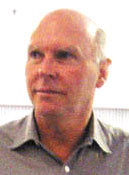
 raig Venter is a scientist equally known for his sequencing of the human living code and for being a maverick who dared take on the big guns at the publicly funded Human Genome Project. Announcing that his privately owned firm Celera Genomics would sequence the human genome faster and more economically than the worldwide consortium, his challenge is now credited with spurring the competition that generated sufficient urgency to bring the project to its successful conclusion in 2000. His controversial expressed-sequence-tag (EST) approach to gene discovery is now the de facto standard adopted even by those who criticised him most harshly. raig Venter is a scientist equally known for his sequencing of the human living code and for being a maverick who dared take on the big guns at the publicly funded Human Genome Project. Announcing that his privately owned firm Celera Genomics would sequence the human genome faster and more economically than the worldwide consortium, his challenge is now credited with spurring the competition that generated sufficient urgency to bring the project to its successful conclusion in 2000. His controversial expressed-sequence-tag (EST) approach to gene discovery is now the de facto standard adopted even by those who criticised him most harshly.
After leaving Celera Genomics in 2001, Venter created two new non-profit organisations to complement TIGR. The Center for the Advancement of Genomics focuses on policy and social issues related to the field. The Institute for Biological Energy Alternatives provides the focal point for applying the tools of genomics to the climate-change issue.
When the scientist visited Singapore to talk about the future of genomics, INNOVATION's Lay Leng TAN got some insight into his thoughts about the direction the field is heading.
Innovation:
In which area do you work now and why?
Venter:
Infectious diseases hold great importance in the research arena because they kill millions every year worldwide. Malaria, number one on the infectious diseases list, kills 5 million children a year; and tuberculosis, 5 to 6 million people. AIDS figures are catching up on these, while new diseases like severe acute respiratory syndrome (SARS) are emerging all the time and will continue to do so as populations grow and density increases. These problems have always faced humanity and will persist as long as antibiotic-resistant organisms multiply. I now direct three research institutions at which 500 scientists work on genomes of microbes and human pathogens - malaria, anthrax, TB, cholera, and other major infectious agents. Some who work on plant genomes contributed to the first plant genome. The centres look at applying human genomics to the practice of genomic medicine. One new institute applies genomics to the environment in order to understand what is there, who is there,
and what modern techniques can give more information about the other 99.9% of life that we don't know much about yet.
|



 raig Venter is a scientist equally known for his sequencing of the human living code and for being a maverick who dared take on the big guns at the publicly funded Human Genome Project. Announcing that his privately owned firm Celera Genomics would sequence the human genome faster and more economically than the worldwide consortium, his challenge is now credited with spurring the competition that generated sufficient urgency to bring the project to its successful conclusion in 2000. His controversial expressed-sequence-tag (EST) approach to gene discovery is now the de facto standard adopted even by those who criticised him most harshly.
raig Venter is a scientist equally known for his sequencing of the human living code and for being a maverick who dared take on the big guns at the publicly funded Human Genome Project. Announcing that his privately owned firm Celera Genomics would sequence the human genome faster and more economically than the worldwide consortium, his challenge is now credited with spurring the competition that generated sufficient urgency to bring the project to its successful conclusion in 2000. His controversial expressed-sequence-tag (EST) approach to gene discovery is now the de facto standard adopted even by those who criticised him most harshly.